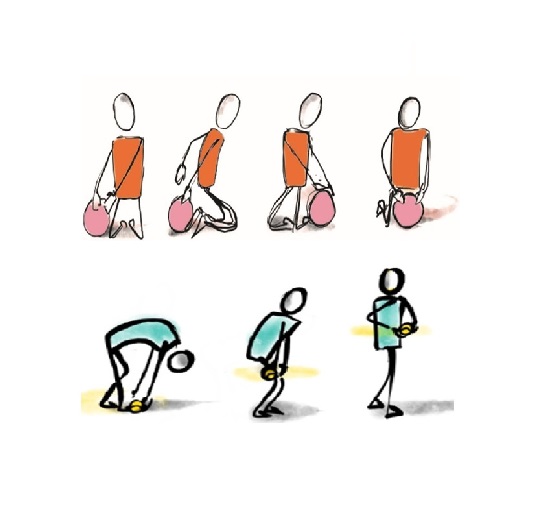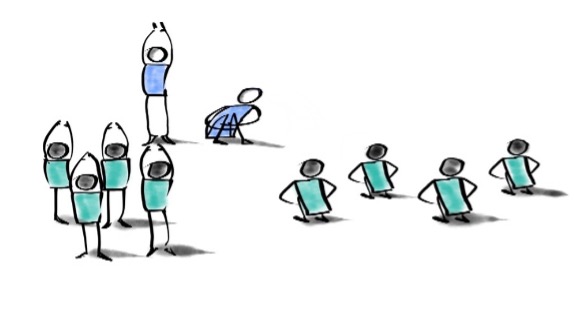Get lesson 1 of all sports: Sign up for a free pe planning membership
Ball Skills
Learning Objectives
- Handles tools, objects, construction, and malleable materials safely and with increasing control
- Understands that equipment and tools have to be used safely
Curriculum information
Literacy Keywords
- Safely
- Control
- Ball control
- Ball
- Explore
Citizenship
- Develop own experiences and ideas
- Understand and follow basic rules
Equipment
- Balls
Risk Assessment
- Suitable clothing and footwear worn by participants.
- Equipment suitable for participants, safe and checked.
- Area safe and checked - any hazards removed.
- Safety information highlighted to participants.
- Staff aware of all emergency procedures, including designated 1st aider.
Knowledge Checks
Throughout this plan you will see ‘Knowledge Checks’ to help you ensure the pupils are acquiring the intended knowledge as the lesson progresses. The two types of knowledge to focus on in PE are:
- Declarative Knowledge: Factual knowledge concerning movement, rules, tactics, strategies, health and participation (best practiced through spoken or written observations of a practical demonstration).
- Procedural Knowledge: Knowing how to apply declarative facts (best practiced through demonstration or participation).
Teacher Notes
- This is the first lesson in the ‘Ball Control’ unit of work. The aim of the lesson is to give the children the opportunity to explore a ball. The children will have the opportunity to explore how the ball moves and get used to playing with it.
Before the lesson begins, or after the warm up, have a discussion with the children about ball safety…
- It is important the children understand how to play with a ball safely.
- Explain that it is easy for people to fall over balls and accidents to happen if they are left around and not looked after.
- By following a few simple rules we can reduce the chances of accidents happening.
- Discuss the following safety points with the children:
– Look after your ball.
– Balls can roll away from you easily. Balls left or rolling around can be tripped over.
– Important to still look where you are going when moving with a ball. Head up to avoid other children, obstacles or other lose balls.
– Do not throw your ball, unless instructed to do so, and other children aren’t obstructing.
– Always play safely and sensibly with a ball.
- Allow children an opportunity to discuss these points, give their experiences of ball skills and games.
- Revisit these important safety points during the lesson and throughout the unit.
Activities & Games
Mr Man Game
3 - 5 mins- Ask the pupils to find a space in the area.
- One by one introduce and demonstrate the different actions that go with the ‘Mr. Men’.
– ‘Mr Slow’ – move slowly around the area.
– ‘Mr Late’ – move quickly around the area.
– ‘Mr Jelly’ – shake your body on the spot.
– ‘Mr Bounce’ – bounce around the area.
– ‘Mr Small’ – crouch as small as possible and move around the area.
– ‘Mr Strong’ – flex muscles to show them.
– ‘Mr Tall’ – stretch as tall as possible and move around on tip-toes.
– ‘Mr Happy’ – move around the area with a big smile on your face.
– ‘Mr Star’ – perform star jumps on the spot.
- Introduce the Mr Men and actions at an appropriate pace.
- Keep calling out different actions for the game.

Teaching Points
- When performing actions ensure you are in a space.
- Introduce new actions gradually to allow children to remember them.
- Head up and looking forward to see where you are going when moving around.
- Move carefully around the space avoiding other children.
- Perform the actions with the children as a visual reminder.
To make activity harder:
- Introduce the Mr Men quicker, or create more ‘Mr Men’ actions.
To make activity easier:
- Introduce fewer ‘Mr Men’ actions and perform the actions as a visual reminder.
Around It Goes
3 - 5 mins- Each child requires a ball and a space to work in.
- Ask the children to sit on the floor with the ball in front of them.
- Challenge the children to roll their ball on the floor around their body whilst still sat down.
- Let the children practise.
- Ask the children to change the direction they roll the ball around their body.
- Once they can roll the ball both ways around their body explain you are going to call out “Change” and this means that they must change the direction the ball is rolled around their body.
- Keep calling out “change” as the children roll their ball.

Teaching Points
- Keep the ball under control, use hands to roll the ball.
- Twist your body as you roll the ball.
- Try to always keep at least one hand on the ball.
- Use different size balls to offer different challenges.
To make activity harder:
- Explain that their feet are ‘glued’ to the floor, and they cannot move from their spot.
To make activity easier:
- Slow down the activity.
Progression 1:
- Repeat the activity as described but with the children on their feet.
Progression 2:
- Introduce a body part command, for the ball to move around that body part.
Knowledge Check
- PROCEDURAL KNOWLEDGE: Ask some children to demonstrate the activity/skill.
- DECLARATIVE KNOWLEDGE: Ask other children to describe what is required to perform the task with success.
Copy Cats
5 - 10 mins- The children work in pairs standing facing each other 2/3 steps apart.
- Each child needs a ball.
- One child from each pair is the ‘Leader’.
- The ‘Leader’ must stay on the spot but can perform whatever actions they want with the ball.
- Their partner must copy their actions as quickly and closely as possible.
- Swap roles every minute.

Teaching Points
- Encourage the children to think of different actions.
- High movements.
- Low Movements.
- Vary the speed of movement/actions.
- Balance the ball Use different body parts to move/control the ball.
- What actions can you do with the ball? throw, bounce, catch.
To make activity harder:
- Use a smaller ball. Challenge the children to create more difficult moves/balances.
To make activity easier:
- Begin by playing the game a class, where the children copy the teacher.
Do this, Do That
10 - 15 mins- Ask the children to sit in a space with their backs straight and legs crossed.
- The aim of the activity is for the children to listen to and follow instructions.
- Use the line “Do This…” and describe an action, balance or pose the children must perform e.g. “Do this: jump up and down.”
- Every time “Do this..” is used the children must perform the action that is described.
- Occasionally use the line “Do that…” and describe an action – the children must not perform this action and continue performing the previous one.
- Keep giving the children different actions to perform.

Teaching Points
- Listen carefully to instructions.
- All “Do this…” instructions must be performed.
- Encourage the children to perform the actions to the best of their ability.
- Head up and looking forward to see where you are going when moving around.
- Move carefully around the space avoiding other children.
To make activity harder:
- Choose more difficult actions for the children to copy.
To make activity easier:
- Choose simple actions for the children to copy.
Progression:
- Introduce a ball to the activity and include the ball in the ‘Do this’ and ‘Do that’ instructions.
Ball Movements
3 - 5 mins- Ask the children to find a space to stand in, so they can see you at the front of the class.
- Using different commands ask the children to copy the actions as you perform them at the front of the class…
– Ball: crouch down into a small tuck shape; balance on feet; hold legs tight into chest, creating a ball shape.
– Throw: Jump in the air, reaching arms up as if being thrown in the air.
– Roll: With feet shoulder width apart, bend forward at the hips. Keeping the knees straight, move hands around close to the floor as if rolling the ball between legs.
– Bounce: Step from side to side.
- Repeat the commands several times to allow the children to stretch their bodies.

Teaching Points
- Gradually slow the activity down as children begin to cool down. All count to 10 whilst holding the stretch.
Knowledge Check
What did you do with the ball today?
- Encourage the children to explain what they did during the lesson
- Encourage the children to explain the skills they learnt and used
How does the ball move?
- Rolls, bounces
- Encourage the children to think of ways the ball moved during the lesson
Get lesson 1 of all sports: Sign up for a free pe planning membership